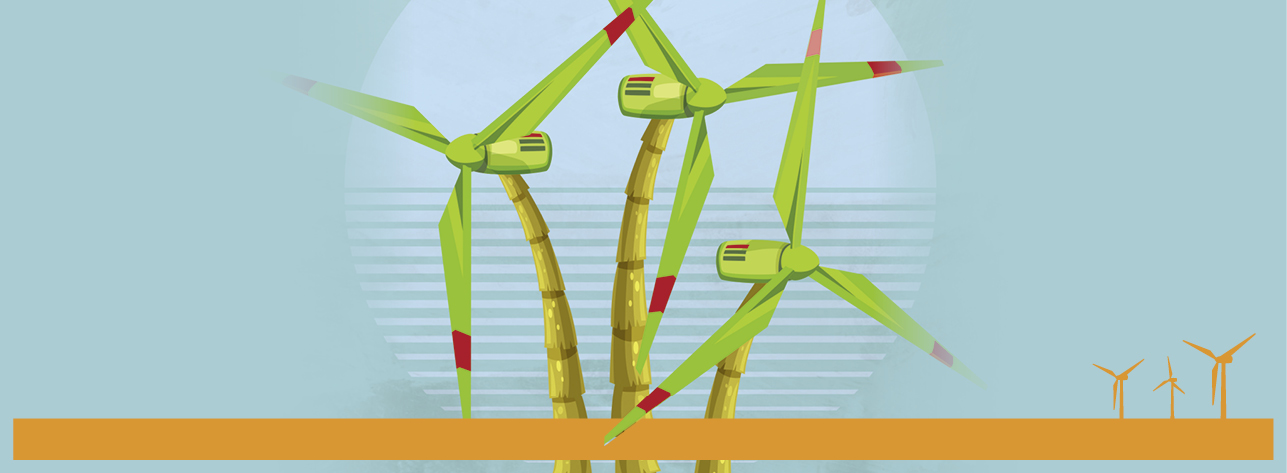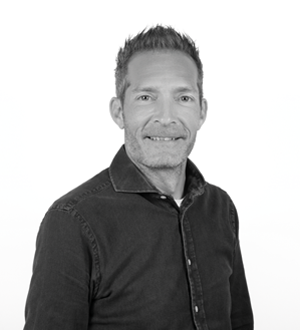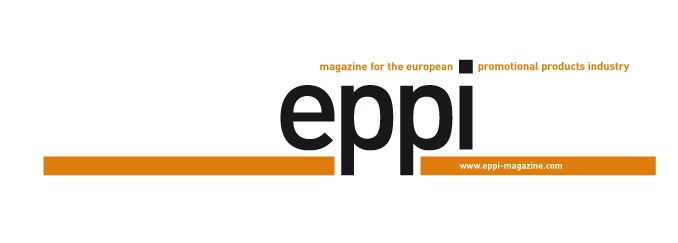The international distributor cooperative Ippag (International Partnership for Premiums and Gifts) has developed a tracking tool under the name “Ippag On track”, which helps calculate and compare the CO2 emissions of individual products and product groups. eppi magazine talked with Mike Oxley (owner and Managing Director of the British Ippag member, Prominate UK, and the Vice-Chairman of Prominate, the global Joint Venture of Ippag) and Fabian Hugelshofer, co-owner and Head Key Account at the Swiss Ippag member, Pandinavia, about the initiative for more transparency and climate-friendlier product alternatives.

How did the “On track” tool come about and how does it work?
Mike Oxley: Our carbon tracking tool can be used by all Ippag members to calculate the carbon emissions related to the products that we propose and sell. Key information such as the origin of the items, the delivery location, the product type, decoration method, packaging information, quantity or life cycle are entered into the calculator to provide a carbon impact calculation. The method was developed by the consulting company, Ecoact, a leading supplier in this field. Marie-Cécile Maréchal from our French member, Lagardère, was significantly involved on behalf of Ippag. Ippag has made the tool available to a host of suppliers, who are licence-holders. The licencing fees cover part of the considerable costs incurred by the project.
Fabian Hugelshofer: The tool was ISO 14067-certified by Bureau Veritas. Trust and credibility are important in terms of the calculation method. There are a number of comparable tools on the market, but for Ippag it was important to provide an industry-specific solution.

Mike Oxley
Mike Oxley: Our member companies use the data provided and its interpretation to demonstrate the impact, compare solutions and optimise choices, reduce overall emissions and compensate accordingly via local schemes. The process involves two steps – firstly, selecting the product based on the CO2 impact, secondly as soon as the order has been placed calculating the actual impact of a product including the transport, etc. So, on the one hand it is about educational work, on the other hand about compensation. At the start we thought our climate tool would above all serve the compensation, but actually we use it much more to inform and advise our customers – which is, of course, a good thing.
How do the services and the transparency you can offer due to the tool go down with your customers?
Fabian Hugelshofer: Our CO2 check is extremely popular. Now, we can really demonstrate our knowhow and communicate with the customers at eye level. Just recently one of our biggest customers asked whether we can hold lectures on the theme sustainability, which is super of course. A further example: one of our large fulfilment customers has a line-up of around 150 articles and each new article we source is first analysed with regard to production location, material properties, packaging, transport route, etc and then tested using the tool and compared with the existing product range.
Is it mainly big companies that play a leading role in climate-conscious purchasing?
Mike Oxley: It is not only the big multinationals, but one can say that overall it is mainly big organisations who have the time and resources to bring about the necessary change. And of course customers who order large volumes are more aware of the influence they thus have on the environment. Some companies are more interested in the story they are telling, others above all in their own sustainability balance. Ideally in both, of course.
Fabian Hugelshofer: The larger companies frequently take the theme climate protection more seriously, alone because they are often obliged to publish their CO2 emissions in the scope of sustainability reports. Then they say for example: Next year our goal is to cause 30% less CO2 and then the merchandising has to make its contribution. Small or medium-sized companies are more hesitant here. If the legal provisions are tightened in future the users will not be able to avoid occupying themselves more with their climate balance. However, betting solely on compensating for emissions does not suffice. The commitment ends all too often with investing a certain amount in compensation programmes, which means the companies are rather moving in the direction of greenwashing. If one wants to do things correctly, one actually has to check every product for the effective CO2 emissions and, if necessary, change, adapt or do without it altogether.
That is precisely the heated debate that is currently being held about climate neutrality.
Fabian Hugelshofer: Our industry with its many products cannot become 100% sustainable overnight. But the honest goal should be to calculate products and their impact as accurately as possible and draw the necessary conclusions. Many companies boast about how sustainable they are, but when we underline how they could make their collection more climate-friendly by doing without certain products, or by ordering products with sustainable material from closer production sites, the original products are often still ordered due to slightly higher prices and less flexibility in design. This is partly due to the fact that many players frequently have to take different interests into account when making their decisions – management, marketing, sponsoring, procurement, etc. – which all have to act in concert to change something with regard to sustainable product development.
Against this backdrop how do you try to convince and educate your customers?
Mike Oxley: We have integrated our CO2 tracking competence into all marketing measures. Among others, we offer educational booklets intended to carry our message, to inform, re-think, inspire, and educate concerning sustainability and help our clients be “on track” with sustainable, effective and purpose-driven promotional campaigns.

Fabian Hugelshofer
Fabian Hugelshofer: The tool has enormous potential, but it also demands a lot of commitment, discussions and readiness to invest. Because the production time is in some cases longer, the creativity of the product research perhaps restricted, not to forget the impact on the price. However, the customers are sensitised and if we can credibly convey in the scope of professional coaching, how they can position themselves positively via storytelling and PR work and that they gain added value if they sell products with a low CO2 footprint, a change in thinking is achieved.
Can the tool also be used for your own sourcing and procurement? Do you check products in terms of their carbon footprint when you buy them?
Fabian Hugelshofer: Of course, we regularly analyse our purchasing channels, try to set up new production options, convince our production partners of the urgency, hold many discussions, do coaching, and are very positive that our partners support our philosophy of sustainable procurement.
Mike Oxley: This has even contributed towards us making huge changes to our sourcing over the past three years. Because of Corona, supply chain problems and price increases in the Far East, Europe came more under focus and now due to its improved CO2 balance – which we can measure meanwhile – it has even become more attractive. That has had a huge impact on our UK business. The percentage of goods that we buy in China has declined strongly.
Which product groups have comparatively low CO2 emissions, which are particularly harmful?
Mike Oxley: Generally, and on average, electronic and electrical items are particularly harmful, whilst stationery, writing instruments and drinkware are comparatively low per unit. Please also keep in mind there can be significant variations within product groups.
What about textiles?
Mike Oxley: In the case of many textiles – especially those made of cotton – the water consumption is a much bigger problem than the CO2 emission. Concerning the latter, in the overall comparison with other product groups textiles more or less lie in the middle range. A lot depends on where the materials and finished products originate from.
Fabian Hugelshofer: Productions “made in Europe” are surely more meaningful due to their much lower transport emissions. A lot of items can’t be produced in Europe, but lower CO2 emissions can be achieved with a different choice of product or material. Products that have been manufactured following the cradle-to-cradle principle have the lowest CO2 emission by far. Cradle to Cradle® is a design principle that was developed in the 1990s by Prof. Dr. Michael Braungart, William McDonough and EPEA GmbH Hamburg. It describes the safe and potentially infinite circulation of materials and nutrients in cycles. All ingredients are chemically harmless and recyclable. Waste in today’s sense, as created by the previous “Take Make Waste” model, no longer exists, only usable nutrients. We were the first company in Switzerland to bring a cradle-to-cradle-certified textile collection out onto the market.
What is the situation on the supplier side? Many suppliers have in the meantime already made considerable progress and are changing their line-ups and production methods so that they become more climate- friendly.
Fabian Hugelshofer: There are many good initiatives, Pandinavia also promotes some of them. For example, we are involved in start-ups – among others in the textile sector, where it wasn’t possible to separate cotton and synthetic fibres for a long time. In the meantime, there are biomechanic techniques that make this possible. If one succeeds in making these techniques available to the industry, huge progress would have been made.
Both of your companies offer customers the opportunity to make a voluntary contribution to climate protection when making a purchase and you collaborate with various projects all over the world. How intensively do your customers make use of this offer?
Mike Oxley: Many corporate clients run their own schemes which they utilise instead – or they are more interested in selecting lower impact items.
Fabian Hugelshofer: This offer is used only sparingly. The costs are often a bit too high for the customer. We always offer our customers the opportunity, but in the end it is the customer who decides where his priorities lie. This no doubt is partly also due to the fact that the climate protection compensation has a credibility problem in the public’s perception. Above all companies whose reputation is at high risk are very careful here.
What are you doing yourselves regarding climate neutrality?
Mike Oxley: We are EcoVadis Platinum rated and signatories of the UN Global Compact with a focus each year on a different Sustainability Development Goal. We set targets each year for improvements in our sustainability. Here, recent examples include the roll-out of our carbon calculator with a higher percentage of clients and a focus on a higher percentage of clients adopting sustainable packaging. We have also launched our Promi-Nature® range for carbon neutral promotions.
Fabian Hugelshofer: We try to make progress in all areas, of course this affects above all our procurement, production and transport processes, but also in everyday life: For example, we drive electric cars, we recycle all of our waste, work digitally as far as possible. Last, but not least we are climate neutral certified and our own CO2 footprint is completely compensated for. For us, sustainability is to be understood as a long-term major project in which all steps in the company must be reassessed, new opportunities created, new ways of thinking, new strategies and visions developed. Sustainability must take place step by step, always with the approach that all parties involved achieve added value for themselves.
Mike Oxley: As is the case for the entire field of sustainability, there are no simple answers and it never stops at short-term actions. And of course it is not purely about CO2 compensation – one only has to take a look at the drought that is prevailing all over Europe this summer and which painfully underlines how urgent the theme water shortage is. Sustainability is about making better choices, one product at a time, day by day, action by action and choice by choice.
// Till Barth spoke with Fabian Hugelshofer and Mike Oxley.





